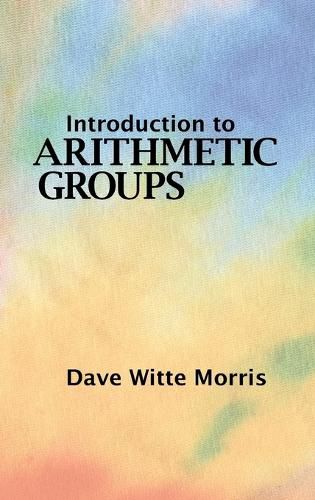Readings Newsletter
Become a Readings Member to make your shopping experience even easier.
Sign in or sign up for free!
You’re not far away from qualifying for FREE standard shipping within Australia
You’ve qualified for FREE standard shipping within Australia
The cart is loading…






This book provides a gentle introduction to the study of arithmetic subgroups of semisimple Lie groups. This means that the goal is to understand the group SL(n, Z) and certain of its subgroups. Among the major results discussed in the later chapters are the Mostow Rigidity Theorem, the Margulis Superrigidity Theorem, Ratner’s Theorems, and the classification of arithmetic subgroups of classical groups. As background for the proofs of these theorems, the book provides primers on lattice subgroups, arithmetic groups, real rank and Q-rank, ergodic theory, unitary representations, amenability, Kazhdan’s property (T), and quasi-isometries. Numerous exercises enhance the book’s usefulness both as a textbook for a second-year graduate course and for self-study. In addition, notes at the end of each chapter have suggestions for further reading. (Proofs in this book often consider only an illuminating special case.) Readers are expected to have some acquaintance with Lie groups, but appendices briefly review the prerequisite background. A PDF file of the book is available on the internet. This inexpensive printed edition is for readers who prefer a hardcopy
$9.00 standard shipping within Australia
FREE standard shipping within Australia for orders over $100.00
Express & International shipping calculated at checkout
This book provides a gentle introduction to the study of arithmetic subgroups of semisimple Lie groups. This means that the goal is to understand the group SL(n, Z) and certain of its subgroups. Among the major results discussed in the later chapters are the Mostow Rigidity Theorem, the Margulis Superrigidity Theorem, Ratner’s Theorems, and the classification of arithmetic subgroups of classical groups. As background for the proofs of these theorems, the book provides primers on lattice subgroups, arithmetic groups, real rank and Q-rank, ergodic theory, unitary representations, amenability, Kazhdan’s property (T), and quasi-isometries. Numerous exercises enhance the book’s usefulness both as a textbook for a second-year graduate course and for self-study. In addition, notes at the end of each chapter have suggestions for further reading. (Proofs in this book often consider only an illuminating special case.) Readers are expected to have some acquaintance with Lie groups, but appendices briefly review the prerequisite background. A PDF file of the book is available on the internet. This inexpensive printed edition is for readers who prefer a hardcopy